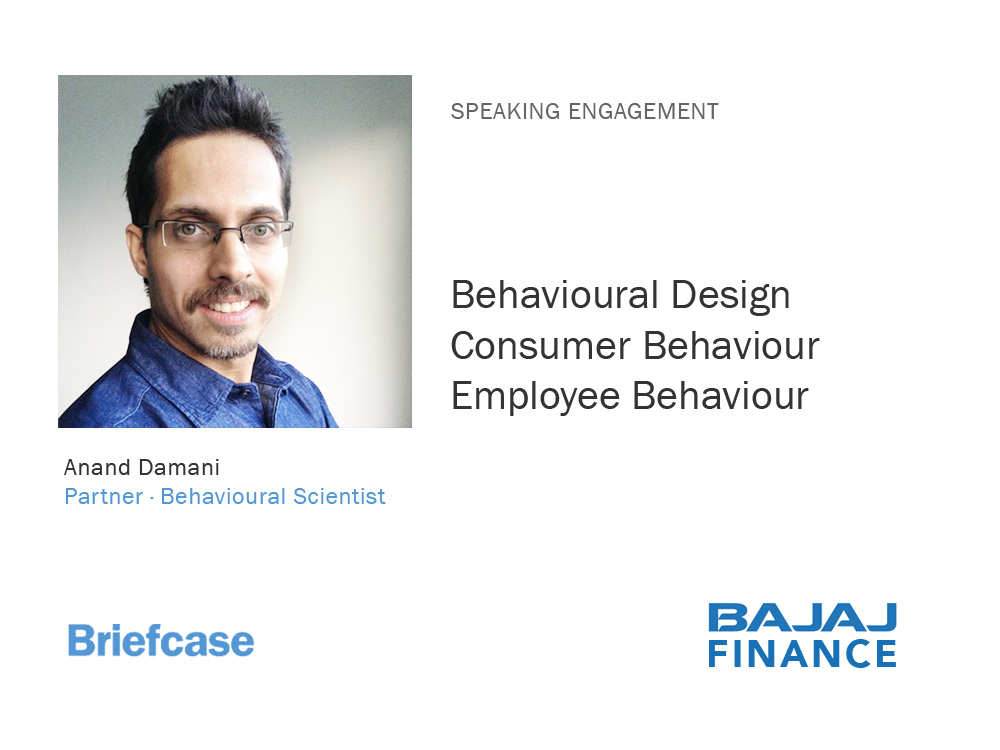Last week we spoke at Bajaj Finance on applying behavioural science to improve sales conversions, new product adoption, product portfolio, choice architecture, pricing strategies, employee behaviour change, productivity, performance management systems, learning and team collaboration.
One of the questions asked during the Q&A was what’s the difference between data science and behavioural science and what’s the role of both in business. We answered the question with the example of Uber. To make sure you can hire an Uber within couple of minutes of booking one and to make sure the cab arrives at the exact location around the time promised, Uber must be applying incredible amount of data science – matching user’s data with driver’s data and of course so much more we don’t understand as behavioural scientists. When Uber would use surge-pricing too, they would apply data science to incentivise drivers to reduce customer’s waiting time. But it didn’t go down well with anyone. So Uber changed its tactic from surge-pricing (1.8x) to upfront-pricing (Rs. 167). With upfront-pricing customers no longer feel its unfair because they are informed about the exact fare at the time of booking prior to the trip, which is a certain fixed amount and that puts customers at ease, even though in peak times Uber indicates that fares are higher due to higher demand. On the other hand, surge-pricing (1.8x) pinched people a lot more. But now with upfront-pricing, Uber is still able to charge a surcharge, but without pinching people as much, thereby improving customer experience. Uber’s upfront-pricing is an example of Behavioural Design.
